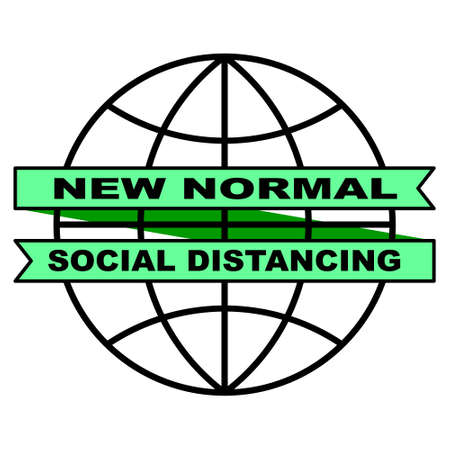Introduction: Understanding Cerebral Palsy in Indian Context
Cerebral palsy (CP) is a group of permanent neurological disorders that primarily affect movement and posture, resulting from non-progressive disturbances in the developing brain. In India, the prevalence of cerebral palsy is estimated to be around 3 cases per 1,000 live births, making it one of the most common childhood disabilities across the country. However, the unique socio-cultural landscape of India brings forth specific challenges for individuals living with CP and their families. Factors such as lack of public awareness, limited access to rehabilitation services, deeply rooted cultural beliefs, and widespread misconceptions contribute to social stigma and isolation. Many families face societal judgment, discrimination, and even exclusion from community activities due to a lack of understanding about the condition. Addressing these challenges requires a culturally sensitive approach that acknowledges both the medical aspects of CP and the prevailing attitudes within Indian society. This context sets the stage for understanding why raising awareness and breaking down stigma are crucial steps towards improving the quality of life for those affected by cerebral palsy in India.
Cultural Perceptions and Social Stigma
In India, traditional beliefs, superstitions, and deep-rooted misconceptions significantly influence the way society perceives cerebral palsy (CP). Many families affected by CP face not only medical challenges but also social barriers that can hinder rehabilitation and inclusion. Historically, neurological disabilities like CP have often been misunderstood as a result of past karma, evil spirits, or divine punishment in various Indian communities. Such cultural perceptions can lead to marginalization, discrimination, and emotional distress for both individuals with CP and their families.
Common Misconceptions and Their Impact
| Misconception | Explanation | Impact on Families |
|---|---|---|
| Past Life Karma | Belief that disability is punishment for deeds in a previous life | Stigma leads to social isolation and reluctance to seek help |
| Evil Eye or Black Magic | Attributing CP to supernatural forces or curses | Families spend resources on rituals rather than medical care |
| Lack of Parental Care | Blaming parents, especially mothers, for the child’s condition | Mothers face guilt and blame from relatives and community |
Societal Attitudes Toward Cerebral Palsy
The lack of awareness about the medical causes of CP perpetuates stigma across rural and urban settings. Children with CP are sometimes hidden from public view or denied access to education and social activities due to fear of ridicule or shame. This exclusion affects not just the child’s development but also the family’s emotional well-being. In joint family systems prevalent in India, negative attitudes from extended relatives can further isolate parents who are already struggling with caregiving responsibilities.
The Need for Community-Based Education
Tackling these challenges requires culturally sensitive awareness campaigns that address local beliefs while providing accurate information about CP. Engaging religious leaders, community elders, and local influencers can help dispel myths and encourage acceptance. Only through sustained efforts in education and advocacy can Indian society move toward greater inclusion and support for children with cerebral palsy and their families.

3. Barriers to Inclusion: Education, Employment, and Social Participation
Individuals with cerebral palsy (CP) in India often encounter significant barriers when trying to access education, secure employment, and participate in community life. Despite advances in awareness and disability rights globally, local cultural perceptions and infrastructural challenges remain prominent hurdles within the Indian context.
Challenges in Accessing Education
For many children with CP, the journey begins with limited access to inclusive education. Many mainstream schools in India lack necessary physical infrastructure such as ramps, accessible toilets, and adapted classrooms. Additionally, there is a shortage of trained teachers who can address diverse learning needs or implement individualised educational plans. Families sometimes face social pressure or discouragement from enrolling their children in regular schools due to misconceptions about intellectual ability, further compounding exclusion.
Obstacles in Gaining Employment
The transition from school to the workforce presents another set of challenges. Societal attitudes towards disability frequently influence hiring decisions in both formal and informal sectors. Employers may perceive individuals with CP as less capable or assume they require costly accommodations. Even when individuals are qualified, inaccessible workplaces and lack of supportive policies create further barriers. As a result, unemployment rates among adults with CP remain disproportionately high compared to the general population.
Social Participation and Community Life
Beyond education and work, people with cerebral palsy also struggle with full participation in community activities. Public spaces—such as temples, markets, public transport, and parks—often lack barrier-free access. Social stigma and misconceptions about disability can lead to isolation or exclusion from cultural and family events. This marginalisation not only affects personal wellbeing but also limits opportunities for advocacy and self-representation.
Together, these barriers highlight the urgent need for comprehensive awareness campaigns that not only educate society but also advocate for policy changes supporting inclusion at every stage of life for people with cerebral palsy in India.
Role of Families and Support Structures
In India, the family holds a central position in shaping societal attitudes and beliefs, especially concerning health and disability. For children with cerebral palsy (CP), families are often the first point of contact for emotional and practical support. However, traditional views and lack of awareness sometimes lead to misunderstanding or even rejection within the household. This stigma can negatively impact the child’s self-esteem and limit opportunities for social participation.
Influence of Family Attitudes on Cerebral Palsy Outcomes
The way a family perceives and responds to a child with CP significantly affects both the childs quality of life and their integration into society. Positive family attitudes can promote acceptance, encourage inclusion in school and community activities, and foster independence. On the other hand, negative perceptions may result in isolation, restricted access to education, and poor mental health outcomes for both the child and their caregivers.
| Family Attitude | Impact on Child | Long-term Outcome |
|---|---|---|
| Supportive & Inclusive | Improved confidence, social skills, better therapy adherence | Higher independence, better integration into society |
| Stigmatizing & Isolating | Poor self-image, limited interaction, low motivation for rehabilitation | Social withdrawal, dependency, reduced opportunities |
The Role of Extended Family and Community Networks
Joint family systems, prevalent in many Indian regions, can either provide a strong support network or reinforce stigma depending on collective beliefs. When extended families are educated about CP, they become allies in advocacy and care. Conversely, lack of knowledge can amplify misconceptions and superstitions surrounding disability.
Importance of Supportive Environments
Creating supportive environments—both at home and within the community—is crucial for combating stigma. Encouraging open discussions about CP, seeking guidance from rehabilitation professionals, involving family in therapy sessions, and joining parent support groups can all contribute to more positive outcomes. Awareness campaigns should therefore prioritize not just individuals with CP but also their entire support structures to break cycles of misinformation and exclusion.
5. Importance of Awareness Campaigns
In the context of India, where social stigma around cerebral palsy (CP) is deeply rooted in traditional beliefs and lack of accurate information, awareness campaigns play a vital role in challenging misconceptions and fostering inclusion. Targeted initiatives help bridge the gap between medical facts and societal perceptions, encouraging families to seek timely intervention and support for children with CP. By using local languages, culturally relevant examples, and community-based outreach, these campaigns can effectively dismantle myths such as CP being a result of past karma or contagiousness.
Reducing Stigma Through Education
Awareness campaigns in India have demonstrated that when communities are educated about the causes, treatment options, and potential of children living with CP, attitudes begin to shift. Schools, panchayats, anganwadi centres, and religious gatherings serve as important platforms for disseminating this information. Interactive sessions led by physiotherapists, special educators, and parents of children with CP help to humanise the condition and reduce fear or prejudice.
Examples of Successful Indian Campaigns
Several Indian NGOs and government bodies have launched impactful campaigns to address stigma. The “Samarthya” initiative in Maharashtra organises street plays (nukkad natak), workshops, and home visits to educate both urban and rural communities about CP. Another notable example is the “We Can” campaign in Tamil Nadu, which uses local media, WhatsApp groups, and community ambassadors to spread awareness on early intervention and inclusive education. These efforts not only improve understanding but also empower families to advocate for their children’s rights.
Moving Towards Acceptance
Ultimately, sustained awareness initiatives are essential for changing mindsets at the grassroots level in India. As more people learn about cerebral palsy through relatable stories and evidence-based information, acceptance increases—opening doors for children with CP to access education, healthcare, and social opportunities without discrimination.
6. Recommendations for Culturally Sensitive Advocacy
Understanding Local Contexts
To address the social stigma surrounding cerebral palsy in India, it is essential to recognise the country’s diverse cultural, religious, and linguistic backgrounds. Effective advocacy must start by engaging with local communities, understanding their beliefs about disability, and identifying region-specific challenges faced by people with cerebral palsy and their families.
Community Involvement and Leadership
Collaborating with community leaders, teachers, religious heads, and local influencers can help build trust and credibility for awareness campaigns. These figures play an important role in shaping public opinion in both urban and rural settings. Their involvement in advocacy activities will encourage acceptance and foster positive attitudes towards persons with cerebral palsy.
Use of Regional Languages and Media
Awareness materials should be developed in regional languages such as Hindi, Tamil, Bengali, Marathi, and others to ensure broad accessibility. Utilising popular Indian media channels—television, radio, WhatsApp groups, and local newspapers—will help disseminate information effectively. Visual storytelling through folk art or short films reflecting real-life success stories can further enhance relatability.
Sensitive Messaging
Campaigns must avoid language that could reinforce stigma or pity. Instead, they should focus on empowerment, inclusion, and the unique abilities of individuals with cerebral palsy. Sharing success stories from within Indian society encourages a strengths-based perspective and inspires hope among families facing similar challenges.
Partnerships with Schools and Healthcare Providers
Integrating awareness programs into schools through teacher training workshops can create an inclusive environment from an early age. Collaboration with healthcare providers ensures accurate information reaches parents during crucial stages of diagnosis and intervention. Special camps or outreach initiatives in partnership with primary health centres can bridge service gaps in rural areas.
Feedback Mechanisms and Continuous Evaluation
Culturally sensitive advocacy should include regular feedback from participants to adapt strategies as needed. Community surveys, focus groups, or digital feedback tools enable ongoing evaluation of campaign effectiveness and ensure responsiveness to evolving social dynamics across different regions of India.

